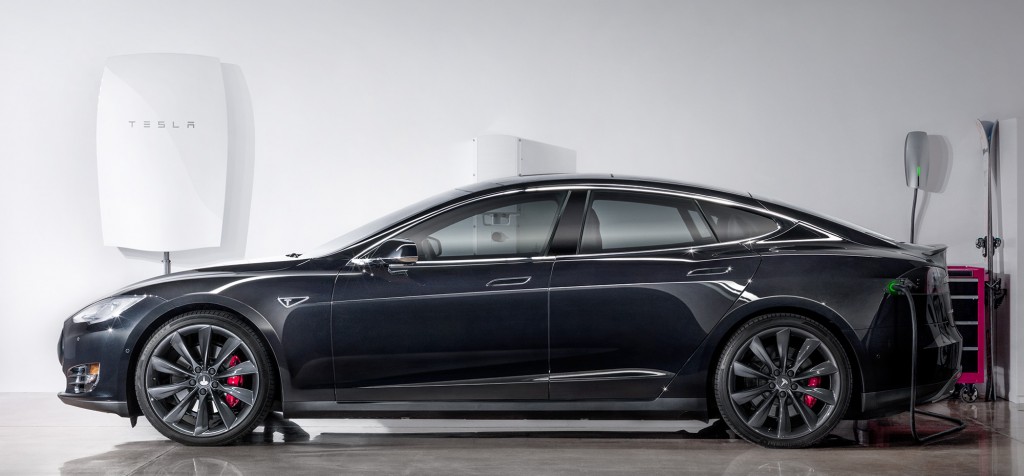Elon Musk likes his secrets.
Tesla Motors isn't known for being particularly open to the media, especially when it comes to major projects like the lithium-ion battery cell "Gigafactory" taking shape just outside Reno, Nevada.
Billed as the largest factory of its kind in the world, the Gigafactory has been strictly off limits to the press until now.
DON'T MISS: Tesla plant-capacity increases point to Model 3 preparations
In an attempt to show Nevada stakeholders a substantial sign of progress, Tesla invited local media to tour the Gigafactory.
These journalists were among the first people outside the company itself to see the factory, albeit with lots of restrictions, noted the Reno-Gazette Journal.
The building's current footprint is 800,000 square feet, with 1.9 million square feet of manufacturing space in four stories.
![Tesla gigafactory as photographed by drone, May 17, 2015 [screen capture from YouTube video] Tesla gigafactory as photographed by drone, May 17, 2015 [screen capture from YouTube video]](https://images.hgmsites.net/lrg/tesla-gigafactory-as-photographed-by-drone-may-17-2015-screen-capture-from-youtube-video_100510749_l.jpg)
Tesla gigafactory as photographed by drone, May 17, 2015 [screen capture from YouTube video]
It also houses conference rooms, an open-air office space, and a warehouse.
While construction is ongoing, the Gigafactory currently assembles Powerwall and Powerpack energy-storage battery packs, using cells shipped from Tesla's car-assembly plant in Fremont, California.
About 14 percent of the total planned factory space is constructed, with the rest expected to be completed by 2020.
ALSO SEE: Tesla And Panasonic: Partners In Electric Cars, Foes In Home Energy Storage (Sep 2015)
That's a bit later than the original October 2017 target date, and may call into question some of Tesla's other plans.
The company hopes to be producing 500,000 electric cars per year by 2020; it is largely relying on the economies of scale offered by the huge factory to sell cars at the lower prices that can generate those sales volumes.
But Tesla implied its strategy will actually help get battery production underway faster.

Tesla Powerwall Home Battery
The company originally planned to build the entire Gigafactory at once, but then opted to do it in segments so that the completed portions of the factory could start producing cells and packs right away, a spokesperson said.
Besides producing massive amounts of lithium-ion cells and battery packs, Tesla's other goal for the Gigafactory is for it to produce no carbon emissions whatsoever.
The company says there are no natural-gas lines "anywhere near" the factory, and its vast roof will eventually be covered with solar panels. It is, however, connected to the electric grid.
MORE: Tesla Gigafactory Jobs, Investments Fell Short Of Projections Last Year
Tesla is also working to get certain suppliers to relocate to the Reno area, and wants to contract with local businesses—which should be exactly what Nevada lawmakers want to hear.
Reno was chosen as the first Gigafactory site after Nevada promised Tesla a $1.25 billion tax-incentive package.
To qualify for the full package Tesla—along with partner Panasonic—must invest at least $3.5 billion in the project over 10 years.
![Tesla battery gigafactory site, Reno, Nevada, Feb 25, 2015 [photo: CC BY-NC-SA 4.0 Bob Tregilus] Tesla battery gigafactory site, Reno, Nevada, Feb 25, 2015 [photo: CC BY-NC-SA 4.0 Bob Tregilus]](https://images.hgmsites.net/lrg/tesla-battery-gigafactory-site-reno-nevada-feb-25-2015-photo-cc-by-nc-sa-4-0-bob-tregilus_100502191_l.jpg)
Tesla battery gigafactory site, Reno, Nevada, Feb 25, 2015 [photo: CC BY-NC-SA 4.0 Bob Tregilus]
Recently-released documents show they've invested $374 million of what's estimated to be a $5 billion project.
That falls short of projections made by economists hired by the Nevada government in 2014 to track the economic impact of the Gigafactory.
Tesla and Panasonic were found to be behind on other metrics as well, including job creation and payroll.
[hat tip: Brian Henderson]
_______________________________________________











